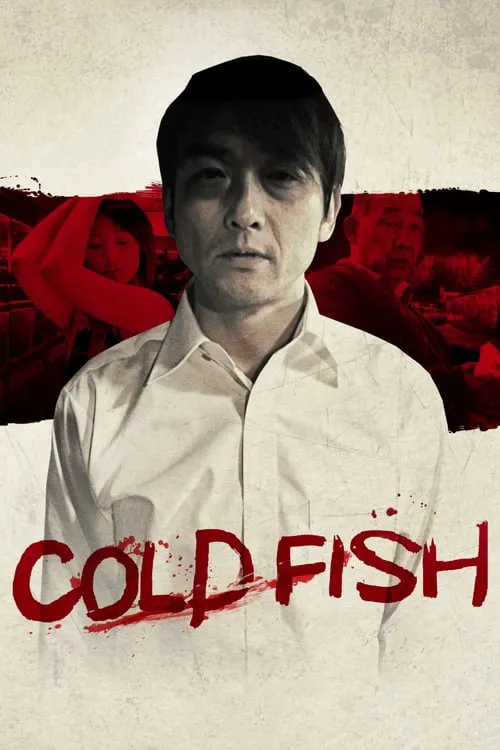Cold Fish

Plot
In the eerie and unsettling atmosphere of Tetsuya Nakashima's "Cold Fish," we are introduced to Shamoto, a mild-mannered and unassuming proprietor of a small tropical fish shop. His life takes an unexpected turn when his 17-year-old daughter, Mitsuko, gets caught shoplifting at a local grocery store. The incident sends her into a downward spiral, leading to trouble at school and at home. Desperate to resolve the situation and save face, Mitsuko's father turns to an unexpected source of assistance - a man named Murata. At first glance, Murata appears to be a benevolent figure who is genuinely concerned about Mitsuko's well-being. He has a similar passion for tropical fish and operates a nearby aquarium shop, where he sells exotic and unusual sea creatures to enthusiastic collectors. As Shamoto and Murata strike up a conversation, they begin to bond over their shared interest in the fascinating underwater world. Their friendly dynamic seems to put Shamoto's mind at ease, as he becomes more at ease with dealing with his troubled daughter. However, as the narrative slowly unwinds, we begin to catch glimpses of Murata's dark and sinister underbelly. He is a man with a complicated and troubled past, one that is marked by a trail of violence and deception. Nakashima deftly crafts a character that is both mesmerizing and repellent, a man whose charismatic front belies a cauldron of twisted desires and sadistic tendencies. Behind closed doors, Murata's behavior becomes increasingly unhinged, and we see flashes of his brutal and calculating nature. His fascination with the beauty and fragility of fish and other sea creatures is juxtaposed with a fascination for violence, a twisted attraction to the raw power and brutality of death. This paradox is expertly captured by Nakashima through the film's unsettling visual motifs and disquieting score. As tensions escalate and the mystery deepens, Shamoto finds himself increasingly entangled in Murata's web of deceit and manipulation. We begin to realize that Murata's motives for befriending the Shamoto family are far from altruistic. He has an ulterior motive for helping Mitsuko, and it becomes increasingly clear that he is more interested in the teenage girl as a plaything than as a genuinely concerned friend. At the same time, Shamoto's relationship with his daughter begins to fray further, as she becomes increasingly drawn into the orbit of the charismatic and manipulative Murata. The atmosphere of dread and foreboding becomes increasingly oppressive, as the audience begins to suspect that something awful is waiting to happen. Through the use of disquieting imagery and unsettling camera angles, Nakashima creates a sense of claustrophobia, as if the characters are suffocating under the weight of their own dark secrets and desires. This oppressive atmosphere culminates in a shocking and disturbing confrontation that redefines the boundaries of human cruelty and violence. Ultimately, "Cold Fish" is a gripping and unsettling tale of obsession, manipulation, and the darker aspects of the human psyche. The film's slow-burning tension and disquieting atmosphere create a sense of unease that lingers long after the credits roll. Nakashima's masterful direction and the performances of his cast members bring this disturbing narrative to life in a way that will leave audiences on the edge of their seats, unable to look away from the horrors that unfold before them.
Reviews
Recommendations




